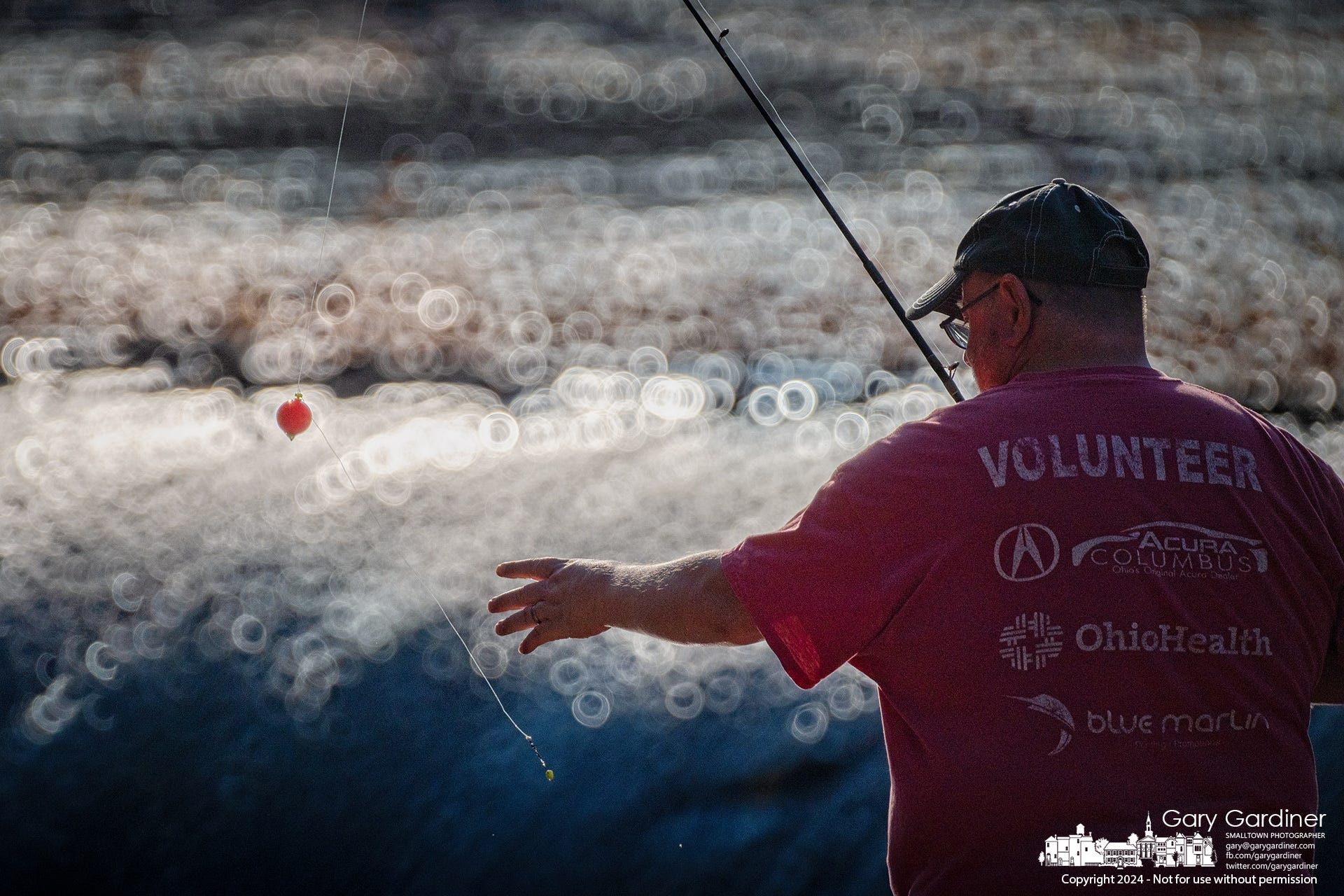How a Catadioptric Lens Redefines Background Blur in This Minimalist Frame
A man casts a line beside the water. Nothing dramatic, just a quiet, familiar gesture. The way it’s captured tells a different story.
What immediately grabs your attention is the bokeh: a field of bright, concentric circles scattered across the background. It’s the unmistakable signature of a mirror lens, specifically a 500mm f/8 mirror lens. Where conventional glass might blur highlights into a creamy wash, this catadioptric design renders them as soft-edged, donut-shaped halos. It’s polarizing, for sure, but here, it works. The effect pushes the background into abstraction without losing the sense of place.
That shallow depth of field does more than isolate the subject; it creates a painterly compression, where the fisherman’s silhouette and the arc of the cast stay razor-sharp against a shimmering, almost pointillist backdrop. The contrast between the crisp outline and the textured blur adds tension, giving weight to the moment.
Backlighting is used deliberately. Shooting into the sun, the photographer relies on rim light to sculpt the figure and rod, pulling them off the background. The glow adds dimensionality and subtly enhances the atmosphere without blowing out the frame.
The decisive moment? The bobber mid-air, suspended on a nearly invisible line, creates a clean focal point in an otherwise diffuse scene. Its red hue punches through the whites and silvers of the water, anchoring the eye. Even the hook, further along the cast, is framed against a darker patch of water..
Composition sticks to the fundamentals: the subject placed at the right third, giving space for the cast and the play of light. The diagonal of the rod introduces movement and subtly guides the viewer’s gaze upward, echoing the energy of the cast. Color is used sparingly, letting tone and contrast carry the weight. The reds, skin tones, and shirt are muted—nothing competes with the light.
This image works not because of the subject matter, but because of how it’s approached. The gear choice is intentional. The timing, composition, and lighting are considered.
It’s a reminder that a bit of patience, even in the most ordinary moments, can reveal something quietly remarkable.
PhotoCamp Daily isn't about the technical skills needed to be a good photographer or photojournalist. There are many videos, self-help books, training courses, classes, and the power of social media as a learning tool.
PhotoCamp Daily is about learning to enjoy creating good photos. It’s about observing subjects and understanding their connection to a story. It’s also about learning to better express what will become a shared view of your world and the new experiences you will encounter.
PhotoCamp Daily is always free! But you can pledge support at any time.
Consider subscribing to The Westerville News and My Final Photo News. Also recommended is Into the Morning by Krista Steele.
My Final Photo News is a reader-supported publication. To receive new posts and support photography and commentary, consider becoming a free or paid subscriber.


